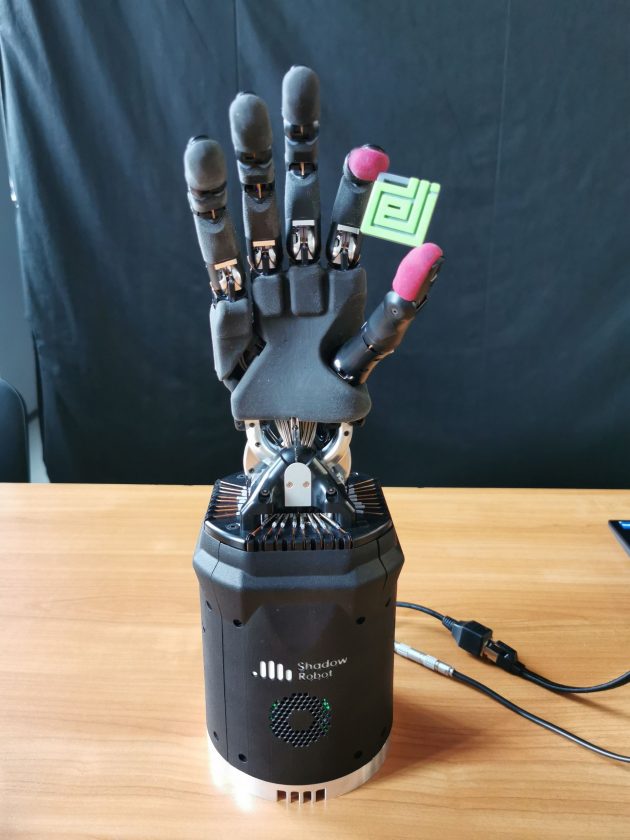
Humanoid robot hand system that provides up to 24 movements across 20 Degrees of Freedom (DoF) to reproduce the kinematics and dexterity of the human hand as closely as possible (integrated tactile fingertips). It has been designed to provide comparable force output and movement precision to the human hand. Shadow Hand systems can been used for research in grasping, manipulation, neural control, brain computer interface, industrial quality control, hazardous material handling and in many other domains. The Shadow Dexterous Hand is a self-contained system – all actuation and sensing is built into the hand and forearm.
- The Hand has been designed to be similar in shape and size to a typical male hand and reproduce as closely as possible the kinematics and dexterity of the human hand. The fingers are all the same length, with the knuckles staggered to give comparable fingertip locations to the human hand. The Hand offers a Palm Curl movement. And it comes complete with finger nails for the closest kinematics to the human hand, making it familiar to deploy and intuitive to handle. Each finger moves side to side independently (abduct, adduct) for unparalleled dexterity. The Hand has a total of 129 sensors to increase accuracy and enable high-level precision. Position sensing at each joint with Hall Effect sensors (0.25 degrees resolution)
- The Hand and forearm have a total weight of 4.3 kg. The Hand, while in a power-grasp, can hold up to 5 Kg.
- Movement speed is dependent on safety settings in the control system. Typical parameters allow a full-range joint movement in free space to operate at a frequency of 1.0 Hz.
- The entire system is built with a combination of metals and plastics including aluminium, brass, acetyl, polycarbonate and polyurethane flesh.
- The hand includes two Shadow Tactile Fingertips (STF). Key features of the STF include 17 taxels per fingertip, each providing 3-axis information, totaling 51 data streams (12 bits @ 1 kHz) representing magnetic field values corresponding to the (x,y,z) positions of magnetic elements relative to each taxel, which allows the estimation of normal and shear forces at each taxel (force estimations not provided). Current sensitivity is tested from 0.15N to 20N in the taxel region;